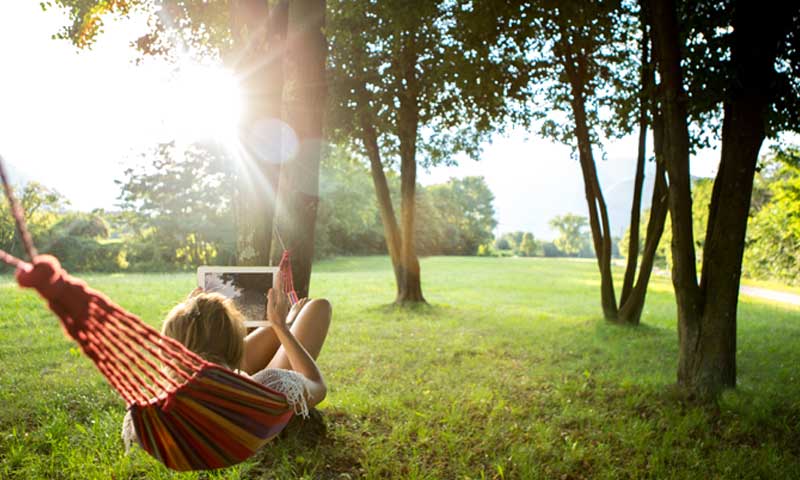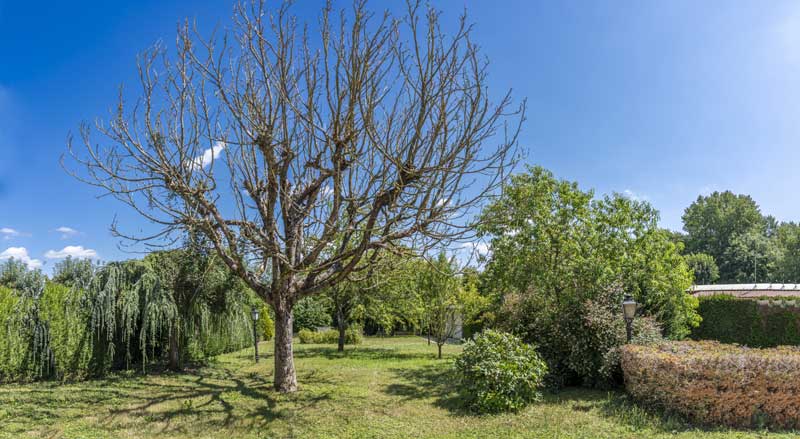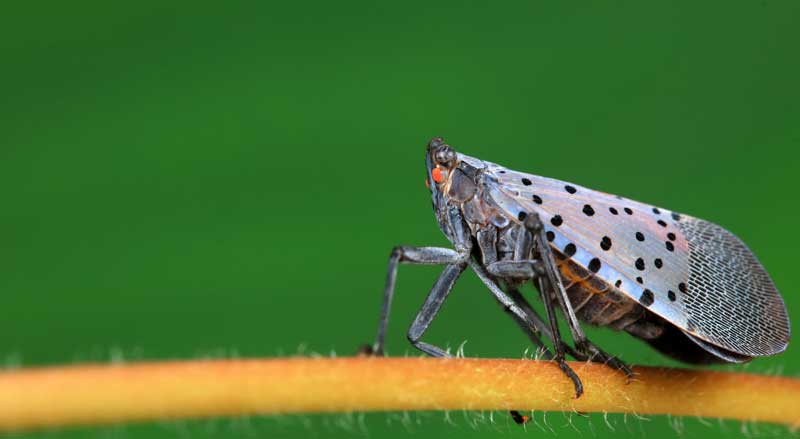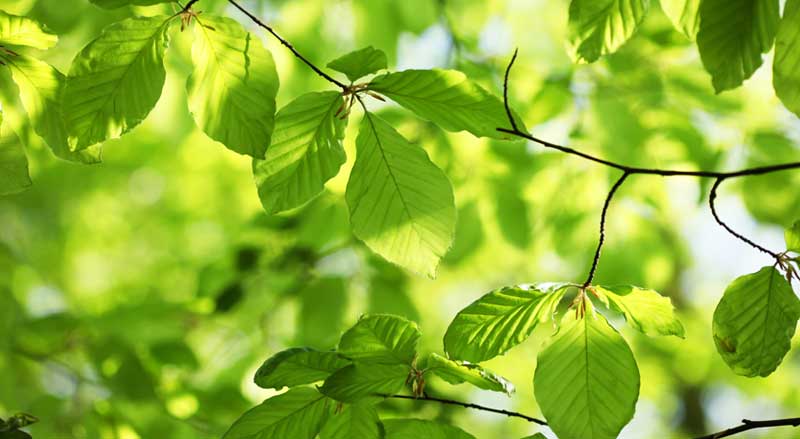Before you invest in a tree for your landscape, learn about the worst trees to plant in your yard.
What’s not to love about a tree? Trees look beautiful, provide shaded places for picnics and support for hammocks. Plant the right trees and they’ll bring you years of enjoyment. Plant the wrong tree and you will soon regret your decision.
Let’s look at some problematic tree issues and see which trees to avoid to keep problems out of your yard.
Messy Trees
If you purchase a fruit tree, or a tree with seed pods, they will be messy. Ask yourself if you want to clean up their mess all year.
The answer could be yes if you truly love the tree species. But some trees are definitely hard to love.
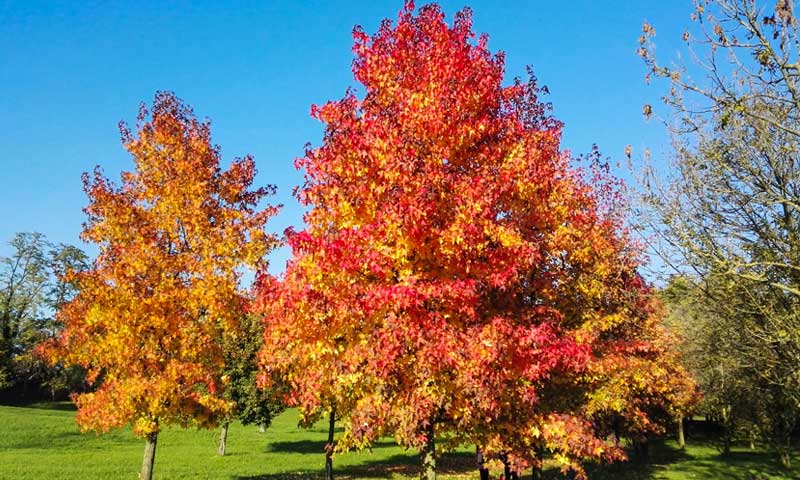
The Sweetgum Tree
Many people think the sweetgum tree is quite beautiful, especially in the fall. It’s found in many parts of the US, including the Northeast. However, the sweetgum tree is exceptionally messy.
The tree’s annoying seed pods are round, hard, and spikey, making them difficult to clean up. But you will need to clean up after this tree if you don’t want to be stepping on and tripping over these pods all fall and winter.
Tree’s With Water Seeking and Otherwise Destructive Roots
Some tree roots will naturally seek out water to keep the tree healthy. But if you have a septic system or sewer lines, this tree activity can cause a costly problem.
Also, some tree root systems are so strong, they can damage your home’s foundation or property walkways.
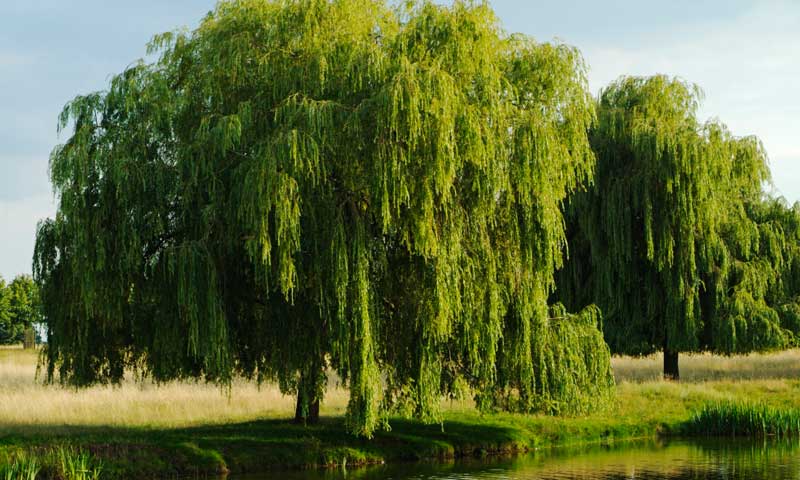
The Weeping Willow
The Weeping Willow is a beautiful tree commonly found in NJ gardens. However, this tree is thirsty. Its roots will seek water everywhere. If you have sewer pipes or a septic system nearby, your tree will eventually find them—and damage them.
The Weeping Willows roots are also strong and can damage sidewalks, patios, and other structures. There are things you can do to best deal with aggressive tree roots.
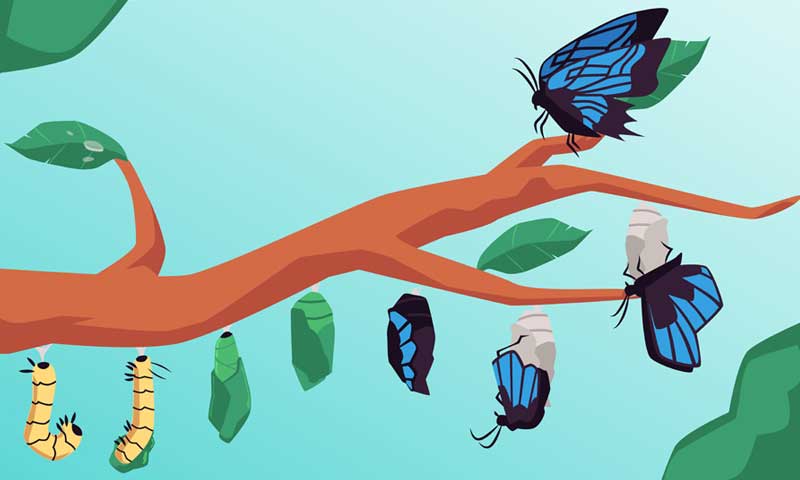
Trees That Invite Pests into Your Garden
Some trees invite pests into your garden that otherwise wouldn’t think of visiting. This is also true for certain tree diseases.
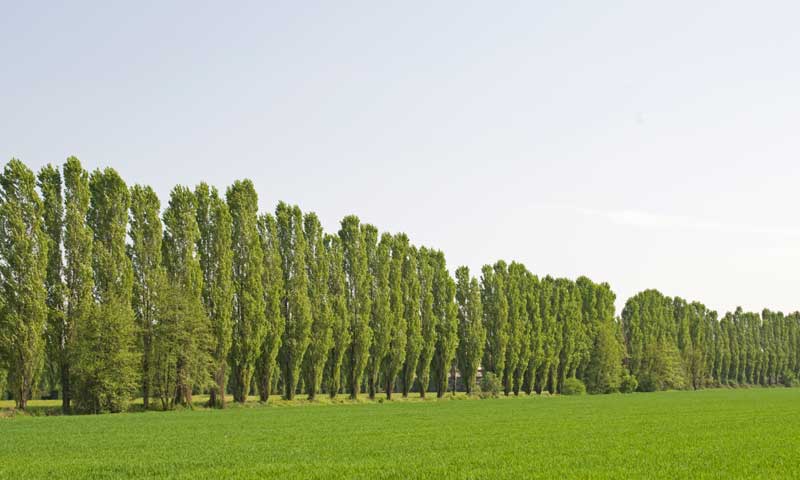
The Lombardy Poplar
The Lombardy Poplar thrives in most US growing zones. It’s fast growing and is popular for creating privacy hedges.
Unfortunately, this tree is also known to develop diseases and attract pests.
The tree is extremely susceptible to canker, a bacterial tree disease. This causes most of these trees to die within 10 to 15 years unless they’re treated and pruned routinely.
The tree is also susceptible to other diseases, including leaf spots, mildews, and honey fungus. If a tree gets honey fungus, remove and destroy it to keep infection from spreading to nearby trees.
And, the Lombardy Poplar attracts plant pests, including caterpillars, aphids, and willow beetles. Regular tree maintenance is required to prevent this.
This tree is also messy, with many dropping leaves and breaking twigs. Still, some homeowners love the privacy it quickly provides.
Weak Trees
Some trees may cause you distress when they act stressed during a cold winter. If a tree has a reputation for being weak, it will need extra care in the fall and winter. You will need to protect it from the cold, snow, and ice.
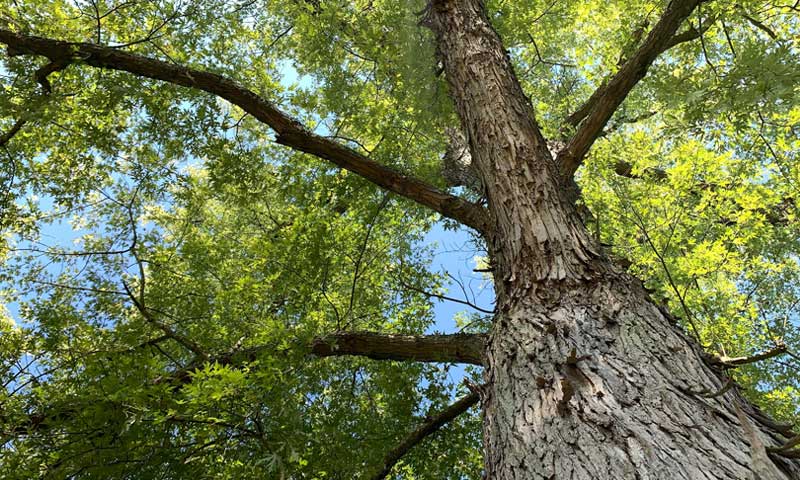
The Silver Maple
The Silver Maple is a fast-growing tree that can grow to heights of 50’ to 80’ at maturity. Many people enjoy its shade. However, this tree’s wood is weak and will break during storms or heavy winds.
Additionally, the tree has problems resisting decay and this can cause hazards on the ground from falling branches.
Its shallow root system seeks water and can disrupt your yard and plumbing.
Trees That Don’t Play Well with Others
Some trees are highly invasive and will crowd out other tree species. This is a problem not only in yards-but when you want to maintain a good ecological balance.
Shade on a hot summer day can be a joy. Shade that makes it impossible to grow grass or other yard plants is downright annoying. If a tree overgrows and creates too much shade, your garden may end up looking unkept or become barren in spots.
Other trees can affect the soil and hurt growing conditions for other plants. For example, dropped pine tree needles can change the pH of soil, hurting other plants.
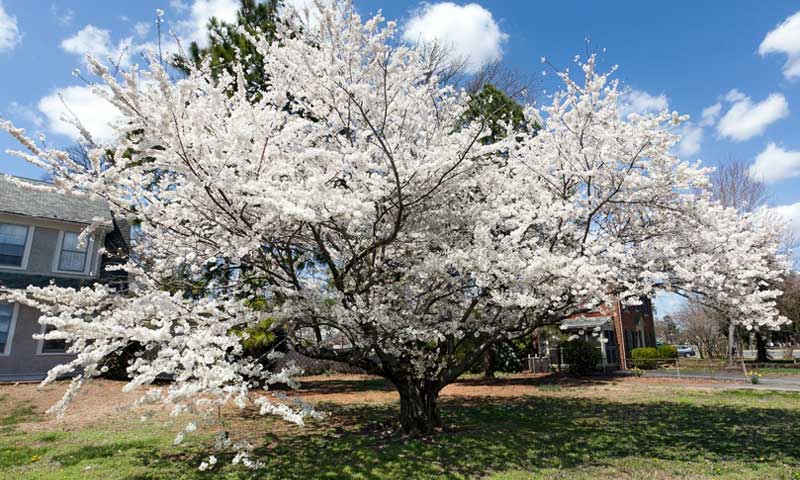
The Bradford Pear Tree
The Bradford pear tree was first brought from China to the US in the 1960s. Initially, people adored the tree for its showy white blooms and rapid growth.
However, in recent years, the tree has fallen out of favor and is now known as one of the worst trees to plant in your yard.
The blossoms have an awful scent, and its weak branches easily break in winds or storms. This is a dangerous problem since the trees reach 30’ tall.
But their worst problem is that they are extremely invasive and eventually crowd out other plants. Many native species can’t get the light, water, or space they need, and eventually die.
In fact, The Pennsylvania Department of Agriculture has started phasing in a ban on selling the Bradford pear tree because of the environmental damage they cause.
Trees That Make You Sneeze
If you are allergic to pollen, you should avoid certain trees. Many flowering trees create an excess of pollen in the spring and can keep you from enjoying your outdoor living space.
No one enjoys endless sneezing and watery eyes while relaxing outside.

The Red Oak
The red oak is a beloved but messy tree. It’s known for its unique large leaves and acorns that will hurt if they fall on you. And the flowers of the red oak make a mess in the spring.
However, a bigger problem with the red oak is that it sheds many pollen-intense flowers in the spring. If you suffer from allergies, a nearby red oak can make your life miserable.
Possibly the Two Worst Trees to Plant in Your Yard
Ginkgo Biloba
The female variety of Gingko Biloba has messy and truly horrid smelling fruits.
White Pine
The white pine’s pitch falls on cars and clothing and is almost impossible to remove.
Our tree experts at Trees Unlimited can help you care for your trees. Contact us today for all tree services including tree pruning and trimming, tree removal, tree cabling and bracing, and stump removal and grinding.

